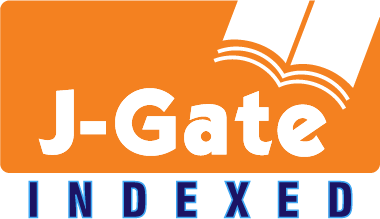VARIABLE SELECTION VIA THE ADAPTIVE ELASTIC NET: MATHEMATICS SUCCESS OF THE STUDENTS IN SINGAPORE AND TURKEY
DOI:
https://doi.org/10.53753/jame.1.1.04Anahtar Kelimeler:
adaptive elastic net- education- machine learning- oracle properties- TIMSSÖzet
The quality of education is crucial for its competitiveness in the developing world. International tests are organized at regular intervals to measure the quality of education and to see the place in the ranking of countries. The surveys on these examinations have provided a large number of variables that can be effective on the scores of the tests, including family, teacher, school and course equipment and information communication technologies, etc. The important question is which variables are relevant for the students' achievement in these tests. We investigated the barriers of mathematics success of Turkish students in the TIMSS exam and compared their status with Singaporean students who took part in at top of the ranking in the exam. For this, we employed the adaptive elastic net which is one of the regularized regression methods to dataset and compared their prediction accuracy according to three different alpha levels [0.1; 0.5; 0.9] to determine the model that has high variable selection ability with optimal prediction. The adaptive elastic net with the alpha level [0.9] was selected as superior to others. As the findings, a technology-oriented education system can help to success of the students in Turkey and the countries having similar experiences in international tests.
İndirmeler
Referanslar
ADOLPHUS, K., LAWTONAND, C. L., and DYE, L. (2013). The Effects of Breakfast on Behavior and Academic Performance in Children and Adolescents. Frontiers Human Neuroscience, 7, 1-28.
AKYÜZ, G. (2014). The Effects of Student and School Factors on Mathematics Achievement in TIMSS 2011. Education and Science. 39(172), 150-162.
ARIKAN, S., VAN DE VIJVER, F. J. R. and YAGMUR, K. (2016). Factors Contributing to Mathematics Achievement Differences of Turkish and Australian Students in TIMSS 2007 and 2011. Eurasia Journal of Mathematics, Science & Technology Education. 12(8), 2039-2059.
BOZKURT, A., ÇIRAK-KURT, S. and TEZCAN, Ş. (2019). A Comparison of the Middle School Mathematics Curricula of Turkey and Singapore with Respect to the Learning Domain of Algebra. PAU Journal of Education. 48(6), 152-173.
BREIMAN, L. (1995). Better Subset Regression Using the Nonnegative Garrote. Technometrics. 37(4), 373-384.
ÇAVDAR, D. (2015). TIMSS 2011 Matematik Başarısının Öğrenci ve Öğretmen Özellikleri ile İlişkisi [The Relationship Between TIMSS 2011 Math Achievement and Characteristics of Students and Teachers]. Thesis (PhD). Gazi University.
CHOI, K., CHOI, T. and McANINCH, M. (2012). A Comparative Investigation of the Presence of Psychological Conditions in High Achieving Eighth Graders from TIMSS 2007 Mathematics. ZDM. 44 (4), 189–199.
CIU. (2008). Learning from Singapore. North Carolina: The University of North Carolina.
DEPREN, S. K., AŞKIN, Ö. E. and ÖZ, E. (2017). Identifying the Classification Performances of Educational Data Mining Methods: A Case Study for TIMSS. Educational Sciences: Theory & Practice. 5(10), 1605-1623.
ERTÜRK, Z. and AKAN, O. E. (2018). TIMSS 2015 Matematik Başarısını Etkileyen Değişkenlerin Yapısal Eşitlik Modeli ile İncelenmesi [The Investigation of The Variables Effecting TIMSS 2015 Mathematics Achievement with SEM]. Ulusal Eğitim Akademisi Dergisi (UEAD). 2(2), 14-34.
FAN, J. and LI, R. (2001). Variable Selection via Nonconcave Penalized Likelihood and its Oracle Properties. Journal of the American Statistical Association. 96(456), 1348-1360.
FAN, J. and LI, R. (2004). New Estimation and Model Selection Procedures for Semiparametric Modeling in Longitudinal Data Analysis. Journal of the American Statistical Association. 99(467), 710-723.
FİLİZ, E. and ÖZ, E. (2019). Finding the Best Algorithms and Effective Factors in Classification of Turkish Science Student Success. Journal of Baltic Science Education. 18, 239-253.
FİLİZ, E. and ÖZ, E. (2020). Educational Data Mining Methods for TIMSS 2015 Mathematics Success: Turkey Case.
Sigma J Eng & Nat Science. 38 (2), 963-977.
GIMENEZ-GUALDO, A.M., ARNAIZ-SANCHEZ, P., CEREZO-RAMIREZ, F. and PRODOCIMO, E. (2018). Teachers’ and Students’ Perception About Cyberbullying. Intervention Strategies in Primary and Secondary Education. Media Education Research Journal. 56(26), 29-38.
GINSBURG, A., LEINWAND, S., ANSTROM, T. and POLLOCK, E. (2005). What the United States Can Learn from Singapore’s World-Class Mathematics System (And What Singapore Can Learn from the United States): An Exploratory Study. Ed: E.Witt. WASHINGTON, DC: American Institutes for Research.
GÜLER, H., ŞAHİNKAYASI, Y. and ŞAHINKAYASI, H. (2017). İnternet ve Mobil Teknolojilerin Yaygınlaşması: Fırsatlar ve Sınırlılıklar [The Penetration of Internet and Mobile Information Technologies: Opportunities and Limitations]. Sosyal Bilimler Dergisi.7 (12), 186-207.
HOERL, A. E. and KENNARD, R. W. (1970). Biased Estimation for Nonorthogonal Problems. Technometrics. 12(1), 55-67.
JIRATCHAYUT, K. and BUMRUNGSUP, C. (2015). A study of Adaptive Elastic Net Estimators with Different Adaptive Weights. Science & Technology Asia. 20(3), 1-7.
KALELİ-YILMAZ, G. and HANCI, A. (2016). Examination of the 8th Grade Students’ TIMSS Mathematics Success in Terms of Different Variables. International Journal of Mathematical Education in Science and Technology. 47(5), 674-695.
LEE, W. O. (2013). The Development of a Future-Oriented Citizenship Curriculum in Singapore: Convergence of Character and Citizenship Education and Curriculum 2015. In Globalization and the Singapore Curriculum from Policy to Classroom. Eds: Z. Deng, S. Gopinathan And C. Kim- Eng Lee. pp. 241-260. SINGAPORE: Springer, First Edition, ISBN: 978-981-4451-56-7.
LEVENT, F. and YAZICI, E. (2014). Singapur Eğitim Sisteminin Başarısına Etki Eden Faktörlerin İncelenmesi [Examination of Factors Affecting Success of Singapore Education System]. Journal of Educational Sciences. 39(January), 121-143.
LITTLECOTT, H. J., MOORE, G. F., MOORE, L., LYONS, R. A. and MURPHY, S. (2015). Association Between Breakfast Consumption and Educational Outcomes in 9–11-Years-old Children. Public Health Nutrition. 19(9), 1575– 1582.
LUNDQVIST, M., VOGEL, N. E. and LEVIN, LARS-A. (2019). Effects of Eating Breakfast on Children and Adolescents: A Systematic Review of Potentially Relevant Outcomes in Economic Evaluations. Food & Nutrition Research. 63(9), 1-15.
MARTIN, M.O., MULLIS, I.V.S. and HOOPER, M. (ed.) (2016). Methods and Procedures in TIMSS 2015. C.A., Boston: Boston College, ISBN: 978-1-889938-29-5.
MULLIS, INA V.S., MARTIN, M. O., FOY, P. and HOOPER, M. (ed.) (2016). TIMSS 2015 International Results in Mathematics. C.A: TIMSS & PIRLS International Study Center, Boston College.
NYE, B., KONSTANTOPOULOS, S. and HEDGES, L., V. (2004). How Large are Teacher Effects? Educational Evaluation and Policy Analysis. 26(3), 237-257.
OECD. (2012). Lessons from PISA for Japan, Strong Performers and Successful Reformers in Education. Paris: OECD.
POLAT, E. and MADRA, A. (2018). PISA 2015 ve TIMSS 2015 Işığında Türkiye’de Cinsiyete Dayalı Başarı Farkı [The Gender-Based Differences in Achievement in Light of PISA 2015 and TIMSS 2015 in Turkey]. ADV and ERG. [Online] https://www.egitimreformugirisimi.org/pisa-ve-timss-2015-bulgulari-isiginda-turkiyede-cinsiyete-dayalibasari-farki bilginotu/ [Date accessed:1/5/2020].
SHEN, X. and YE, J. (2002). Adaptive Model Selection. Journal of the American Statistical Association. 97(457), 210-221.
TIBSHIRANI, R. (1996). Regression Shrinkage and Selection via the Lasso. Journal of Royal Statistical Society. 58(1), 267-288.
TOPÇU, M.S., ERBILGIN, E. and ARIKAN, S. (2016). Factors Predicting Turkish and Korean Students’ Science and Mathematics Achievement in TIMSS 2011. Eurasia Journal of Mathematics, Science & Technology Education. 12(7), 1711-1737.
TUİK (2013). Household Information Technology Usage Survey, 2013. İstanbul,Turkey [online] from http://tuik.gov.
tr/PreHaberBultenleri.do?id=13569, [Date Accessed: 4/1/2020].
TUİK (2015). Household Information Technology Usage Survey, 2015. İstanbul, Turkey [online] http://tuik.gov.tr/PreHaberBultenleri.do?id=18660, [Date Accessed: 4/1/2020].
UNESCO. (2017). Cracking The Code: Girls’ and Women’s Education in Science, Technology, Engineering and Mathematics (STEM). France, Paris: UNESCO.
WILSON, K. and NARAYAN, A. (2016). Relationships Among Individual Task Self-Efficacy, Self-Regulated Learning
Strategy Use and Academic Performance in A Computer-Supported Collaborative Learning Environment. Educational Psychology. 36(2), 236–253.
YAVUZ, H. Ç., DEMIRTAŞLI, R. N., YALÇIN, S. and DIBEK, M. İ. (2017). The Effects of Student and Teacher Level
Variables on TIMSS 2007 and 2011 Mathematics Achievement of Turkish Students. Education and Science. 42(189), 27-47.
YILDIRIM, A., ÖZGÜRLÜK, B., PARLAK, B., GÖNEN, E. and POLAT, M. (2016). TIMSS 2015 Ulusal Matematik ve Fen Bilimleri Ön Raporu: 4. ve 8. Sınıflar [The National Preliminary Report of TIMSS 2015 Mathematics and Science: 4th and 8th Grades]. Ankara: MEB.
YILMAZ, F. and ŞEKERCİ, H. (2016). The Issue of Mother Tongue: Problems of Students Based on the Experience of Primary School Teachers. Journal of Qualitative Research in Education. 4(1), 47-63.
YOO, J. E. and RHO, M. (2017). TIMSS 2015 Korean Student, Teacher, and School Predictor Exploration and Identification via Random Forests. The SNU Journal of Education Research. 26 (12), 43-61.
YOO, J. E. (2018). TIMSS 2011 Student and Teacher Predictors for Mathematics Achievement Explored and Identified via Elastic Net. Frontiers in Psychology. 9, 1-10.
ZOU, H. and HASTIE, T. (2005). Regularization and Variable Selection via the Elastic Net. Journal of the Royal Statistical Society. Series(B) 67, 301–320.
ZOU, H. (2006). The Adaptive Lasso and its Oracle Properties. Journal of the American Statistical Association. 101(476), 1418-1429.
ZOU, H. and ZHANG, H. H. (2009). On the Adaptive Elastic-net with a Diverging Number of Parameters. The Annals of Statistics. 37(4), 1733–1751.
İndir
Yayınlanmış
Nasıl Atıf Yapılır
Sayı
Bölüm
Lisans
Telif Hakkı (c) 2021 Jolistence Publications

Bu çalışma Creative Commons Attribution 4.0 International License ile lisanslanmıştır.









